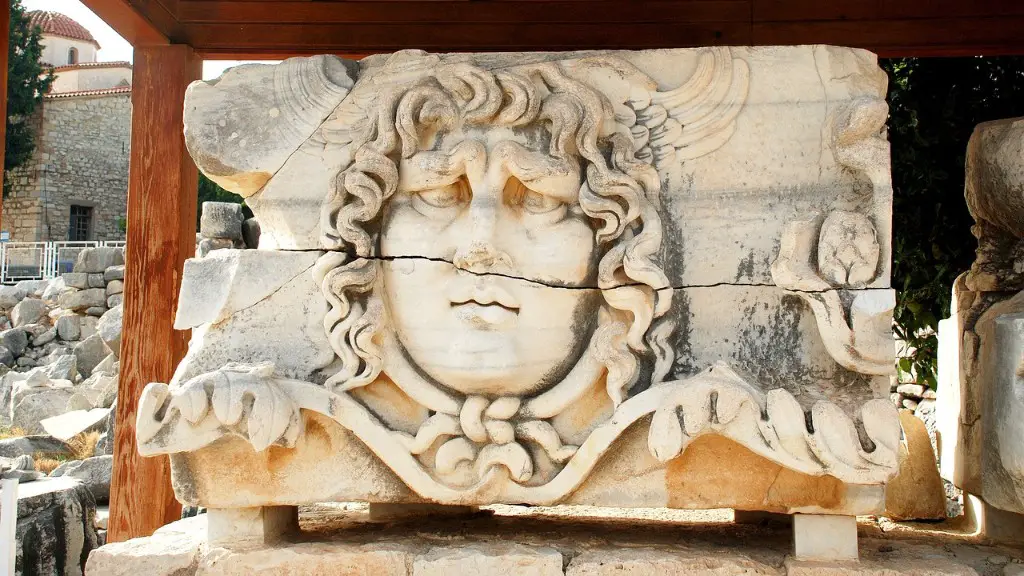Capital Crimes in Ancient Rome
Ancient Rome was a highly developed civilization, possessing legal structures and criminal laws that were advanced for their time. For the majority of Ancient Roman citizens, the penalty for violating these laws was typically a fine or public humiliation. However, for certain *extremely* serious offences, the penalty imposed was capital punishment. These acts constituted the highest level of crimes in Rome, carrying extreme consequences.
In this article, we’ll discuss the types of capital crimes that were applicable in Ancient Rome. Along the way, we’ll explore the history of Roman justice, consider the punishments imposed for these offences, and analyse how attitudes to capital crimes have changed over time.
Historical Context
The system of justice in Ancient Rome developed out of a complex mix of pre-Roman tribal codes, the Twelve Tables, and a range of legal responses shaped by both legislative bodies and magistrates. Capital punishment was reserved for the most serious offences – such as murder and treason – and the punishments ranged from execution to exile, weighted according to their severity.
For example, in the case of murder, magistrates of the highest level possessed the power to order that the perpetrator be put to death, should the offence occur within their jurisdiction. If the offence happened outside of their jurisdiction, then exile was often the prescribed penalty.
Capital Crimes
The selection of capital crimes in Ancient Rome varied over time, but core offences included murder, treason, robbery, piracy, and the desecration of religious sites. All of these offences were punishable by death, often with a range of supplementary punishments.
Murder, for example, was often accompanied by the loss of property, exile, or other sanctions – while robbery and treason were punishable by execution (usually at the hands of a magistrate) coupled with property confiscation and/or exile. Additionally, emperors often sought to make examples of convicted individuals by imposing fines and other punitive measures.
Public Punishment
In cases of capital crimes, public punishment was often enacted, aimed at conveying the severity of the crime to the general populace. These punishments varied greatly, depending on the nature of the crime, but included crucifixion, being torn apart by wild animals, being burnt alive, and being thrown from a cliff or into a river.
Public punishment was also often accompanied by a given individual’s public humiliation. This could involve anything from shaming them in the public square, to displaying their skull in a prominent location, to having their body parts hung in a public space – thereby emphasising the consequences of criminal behaviour.
The Debate
Attitudes to capital punishment vary widely over time and across cultures, with many modern thinkers and policy makers believing it to be a regression from justice. However, experts continue to debate the efficacy and morality of enforcing extreme punishments for extreme crimes.
Some argue that capital punishment is the only way to truly enforce justice for those whose crimes are severe enough to warrant it, while others believe that jail terms or alternative sentencing systems may be more effective in securing public safety without resorting to violence. It is fair to say that Rome’s use of capital punishment remains controversial today.
Legacy of Roman Law
Though the use of capital punishment has arguably declined over time, its legacy persists in many aspects of law. This is particularly true in countries that inherited the Roman legal system, such as Italy and the UK, in which the list of capital offences remain relatively unchanged.
Today, the precedent set by Ancient Rome’s rigorous system of justice continues to influence our own perception of criminal justice – as well as informing which crimes we deem to be most serious, and how we choose to punish them.
The Roman Legal System
Modern legal systems owe a great deal to the Ancient Roman principles of justice. From Roman jurists such as Cicero and Ulpian to the Twelve Tables and Justinian’s Codex of Civil Law, many of the structures and procedures used in the contemporary justice system can be traced back in their entirety to the Ancient Roman period.
Through the development of sophisticated legal processes, the Roman legal system influenced the judiciary of the Medieval period, in turn paving the way for the advancements of the common law system employed in Britain and gradually adopted throughout the world.
Implications of Roman Law
The legacies of the Roman legal system are numerous. Even today, the very language of modern justice often borrows directly from Latin – with the words “plaintiff” and “defendant” both derived from their corresponding Roman terms.
There was also a moral component to Roman justice, with the punishment fitting the crime – whilst society exacted punishment, it also aimed to restore balance, as expressed in expressed in Justinian’s famous aphorism: “that which is not just is not law.”
Evolution of Roman Law
As Ancient Rome transitioned into the Medieval period, major changes were enacted in the legal system – such as the abolition of capital punishment for many offences. In particular, the move towards the common law system saw an increased emphasis on trial by jury rather than punishment by magistrates.
Nevertheless, the legacy of Roman law remains strong – with many of the procedures and principles tied to justice in Ancient Rome still in use today. Whilst capital punishment was an extreme form of punishment, it nevertheless served to demonstrate the severity of certain crimes and the lengths taken to ensure justice.
Attitudes in Ancient Rome
Ancient Rome was a highly stratified society, with considerable power resting in the hands of its governing elite. The use of capital punishment was tied to this social hierarchy, with a measurable degree of influence and power retained by those in charge of administering justice.
The criminal justice system was complex, with a degree of leniency often exhibited by the magistrates presiding over cases. In particular, many capital cases weren’t decided immediately – often giving the defendant the chance to appeal for mercy, or to benefit from a period of extended reflection and thought.
Trial by Jury
Many of the most serious crimes were tried by juries. These juries might vary in size, depending on the nature of the crime, and were typically comprised of neighbours and/or fellow citizens.
Jury trials enabled citizens to observe the moral implications of criminal offences without bowing to the will of the ruling party, helping to ensure a degree of impartiality in criminal justice. However, juries weren’t used in all cases – and in particular, the most serious offences often weren’t tried at all, instead leading directly to execution.
Social Issues
Another significant issue surrounding capital punishment in Ancient Rome related to the social and economic factors at play. Wealthy citizens, for example, often had greater access to legal representation, or means to bribe or otherwise influence the magistrates. This could lead to the wielding of unjust power, with the wealthy and connected escaping punishment for crimes that would otherwise carry the death penalty.
Attitudes to Crime Today
Today, attitudes to crime – and in particular to capital crimes – are different when compared to those of the Ancient Romans. Whilst many countries still have capital punishment on their books, its use is generally weighted differently – with a greater emphasis on corrective measures and rehabilitation rather than immediate punishment.
Modern criminal justice systems recognise that the causes of criminality are complex and varied, and emphasise the importance of understanding and addressing the core issues. This shift towards a more compassionate approach to justice has emerged over time, changing our attitudes to crime and punishment in an effort to ensure that justice is pursued for all.
Justice and Injustice in Ancient Rome
The legal system of Ancient Rome and its associated framework of capital punishment is a complex topic with a number of different moral, social and economic issues to consider. Nevertheless, it is essential for understanding how Rome’s legal system has evolved and how justice has been pursued throughout the ages.
The use of capital punishment to suppress particularly serious offences such as murder, treason and desecration of sites was often harsh and uncompromising. However, Roman justice endeavoured to establish a sense of societal balance – punishing those whose crimes warranted it, whilst still allowing some degree of leniency and appeal in mitigating circumstances.
Social Class
It wasn’t just the legal system of Ancient Rome that carried great influence, but also its social structures – with escalating levels of privilege afforded to those in the upper echelons of society. This had a significant influence on the legal system, with those of a higher class having more access to legal representation and resources that could help to escape the full consequences of any crime they might have committed.
Impact on Modern Civilisations
In spite of its rigid application of capital punishment for severe crimes, Ancient Rome still had laws in place that looked to achieve a semblance of justice for all its citizens – some more equitably than others. Today, many aspects of Roman law continue to endure, carrying with them the legacy of their Roman predecessors.
For example, many countries such as the UK, the US and Italy hold the Roman legal system in high esteem, employing its principles in attempts to pursue justice and uphold the rule of law. As such, Roman law continues to influence our approach to criminal justice and punishment to this very day.
Appeals in Ancient Rome
Appeals were a prominent feature of Ancient Rome’s criminal justice system, typically initiated by a defendant in an effort to escape the consequences of their crime. It was not uncommon for those charged with major offences to request leniency and reprieve from their sentence, although the outcome of such appeals was subject to the discretion of a magistrate.
Defendants might make an appeal on moral grounds – such as the genuine repentance of their actions – or even in relation to social or economic factors that had helped to contribute to the crime. An appeal might also be made in the event of new evidence or developments that might help to exonerate the accused, potentially leading to a dropped or reduced sentence.
Roman Attitudes to Mercy
Since capital crime was the most serious offence punishable under Roman law, Roman attitudes to mercy were often especially pronounced, serving to potentially limit the harsher punishments imposed for certain offences. Magistrates, for example, often exercised their own judgement when it came to deciding the fate of a criminal defendant.
Attitudes to mercy have since developed in modern times, with a greater measure of compassion, understanding, and mental health awareness all playing a role in shaping attitudes to crime and punishment. Nevertheless, Ancient Rome’s acknowledgement of mercy still endures, reflecting the possibility of leniency and mitigation.
Magistrates’ Discretion
Ultimately, appeals in Ancient Rome were ultimately subject to the discretion of a magistrate – and as such, their attitude to the defendant and the incident would shape their decision-making. This was due to the fact that certain magistrates might be more sympathetic or strict in interpretation of the law, leading to contrasting verdicts on what would amount to the same crime.
As a result, the outcomes of appeals were far from concrete – and in cases of capital crime, the sentence ultimately rested in the hands of a single magistrate. The use of discretionary power remains a prominent feature of many legal systems today, influencing the interpretation and enforcement of justice.
Conclusion of Punishment in Ancient Rome
The use of capital punishment in Ancient Rome was an essential feature of its legal system, providing a stark consequence for those offences deemed too serious for lesser sentencing. This was complemented by a range of appeals and mitigating factors that could enable defendants to escape at least some punishments.
Today, the legacy of Ancient Rome’s criminal justice system lives on – with many countries continuing to employ Roman principles and laws to structure their own justice systems. As such, Roman laws carry a great deal of weight in the decisions made by policy makers today, and remain an essential part





